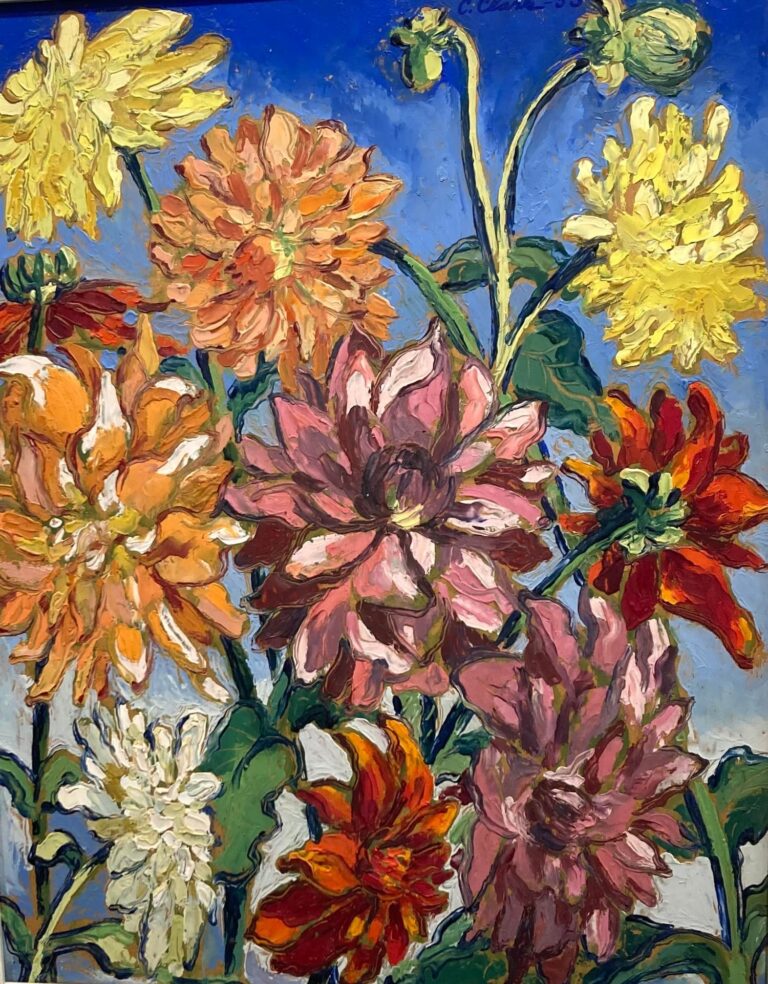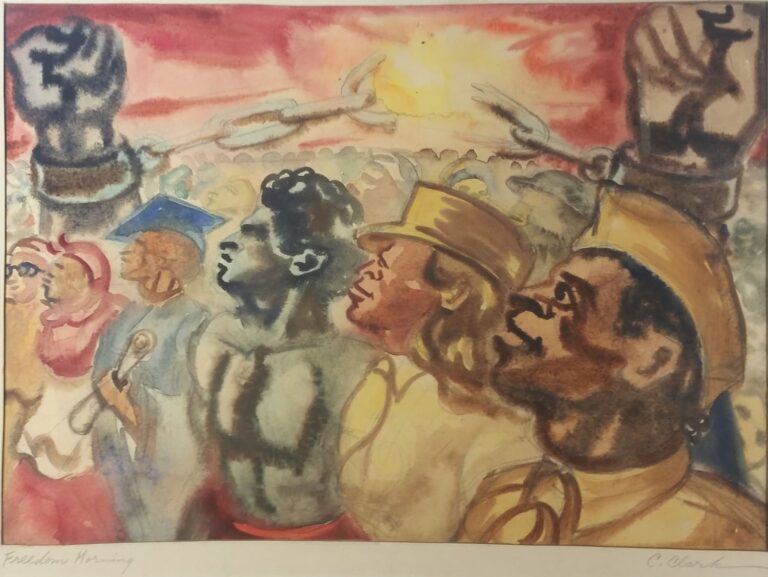
Dahalias

Freedom Morning

Chicken Coop
Contemporary
Claude Clarke
1915-2001

Clark was born in rural Rockingham, Georgia and was a painter who used European tools and methods. ClaClark was born in rural Rockingham, Georgia and was a painter who used European tools and methods. Clark was a master of light and color whose work ranged from figures, flower studies, landscapes, boat marine life and nonobjective abstract. In 1923, Clark’s family became part of the Great Migration, traveling to Philadelphia. He went on to receive his B.A. from Pennsylvania Museum School of Industrial Art. In 1939, Clark found work through the Artists Project of the WPA and in the late 1940s started the art department at Talladega College. Clark’s career bridges the gap between the Harlem Renaissance of the 1920s through 1930s and the Black Arts Movement of the 1960s and 1970s. In a 1972 letter to artist-scholar David C. Driskell, Clark expressed concerns that align with the activist group’s tenets: “Today, [the black artist] has reached the phase of Political Realism where his art becomes even more functional. He not only presents the condition but names the enemy and directs us towards a plan of action in search of our roots and eventual liberation.” Clark’s art likewise functions in part as social commentary related to African American themes, including the African Diaspora.ark was a master of light and color whose work ranged from figures, flower studies, landscapes, boat marine life and nonobjective abstract. In 1923, Clark’s family became part of the Great Migration, traveling to Philadelphia. He went on to receive his B.A. from Pennsylvania Museum School of Industrial Art. In 1939, Clark found work through the Artists Project of the WPA and in the late 1940s started the art department at Talladega College. Clark’s career bridges the gap between the Harlem Renaissance of the 1920s through 1930s and the Black Arts Movement of the 1960s and 1970s. In a 1972 letter to artist-scholar David C. Driskell, Clark expressed concerns that align with the activist group’s tenets: “Today, [the black artist] has reached the phase of Political Realism where his art becomes even more functional. He not only presents the condition but names the enemy and directs us towards a plan of action in search of our roots and eventual liberation.” Clark’s art likewise functions in part as social commentary related to African American themes, including the African Diaspora.
